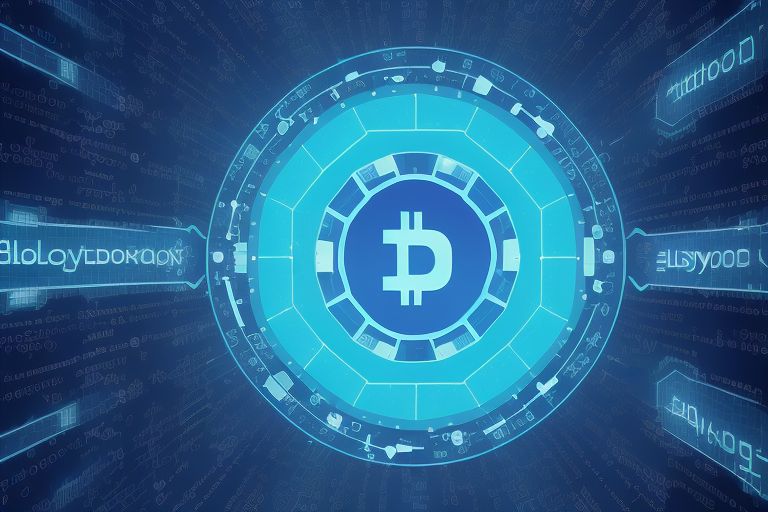What is BlockDAG Understanding BlockDAG Technology for Beginners

BlockDAG is a revolutionary technology that offers a new approach to blockchain design. Unlike traditional blockchain systems, which use a linear chain of blocks, BlockDAG (Directed Acyclic Graph) structures data in a more flexible and scalable way. In a BlockDAG, multiple blocks can be created and connected simultaneously, making transactions faster and more efficient. This technology is gaining attention for its potential to solve many of the scalability issues faced by current blockchain networks. With its unique structure, BlockDAG enables faster transaction speeds, lower fees, and greater decentralization. Understanding BlockDAG can be a game-changer for anyone interested in the future of cryptocurrency and decentralized systems.
BlockDAG technology works by using a directed acyclic graph to organize data. Each block in a BlockDAG network connects to multiple other blocks rather than following a single chain. This means transactions can be processed in parallel, significantly improving speed and scalability. Since there are no limits on the number of blocks that can be added at once, BlockDAG systems are often much faster than traditional blockchain networks. This could potentially address some of the most pressing challenges facing blockchain technology today, such as transaction delays and network congestion. As a result, BlockDAG is becoming increasingly popular in the development of next-generation decentralized applications, cryptocurrencies, and blockchain solutions.
Table of Contents
What is BlockDAG A Simple Explanation for Beginners
BlockDAG is a new kind of technology that works differently from traditional blockchain systems. In a typical blockchain, blocks are connected in a chain, where each block follows one after the other. However, BlockDAG uses a directed acyclic graph structure, allowing multiple blocks to be added simultaneously and interconnected in various ways. This design means there is no need for a single chain, making transactions faster and more scalable. With BlockDAG, it’s easier to handle a higher number of transactions at once without causing delays or congestion. In simple terms, BlockDAG helps improve the efficiency and scalability of decentralized systems, making it a promising alternative for the future of cryptocurrencies and blockchain networks.
How BlockDAG Technology Works: A Beginner’s Guide

BlockDAG works by organizing blocks in a graph-like structure, where each block points to multiple previous blocks. Unlike traditional blockchain systems, which require each block to follow the one before it, BlockDAG allows multiple blocks to be added at the same time, creating more connections. When a new block is created, it doesn’t just link to a single predecessor but can connect to many blocks. This parallel structure allows for faster processing of transactions, reducing bottlenecks and network congestion. As a result, BlockDAG is highly scalable, supporting higher transaction volumes while maintaining security. By decentralizing data storage and spreading it across the network, BlockDAG systems ensure that no central authority controls the flow of transactions.
Why BlockDAG is the Future of Blockchain Networks
BlockDAG is quickly being seen as a revolutionary advancement in blockchain technology. Unlike traditional blockchain, which can struggle with scalability and transaction delays, BlockDAG can process many transactions at once. This design allows BlockDAG networks to handle a higher volume of data with greater efficiency. The ability to add multiple blocks simultaneously reduces the chances of congestion, which is often seen in popular blockchain systems. Furthermore, BlockDAG can offer lower fees, as it doesn’t require expensive mining operations for every transaction. These improvements make BlockDAG a highly attractive option for both developers and users looking for faster, more efficient blockchain solutions. It could become a dominant player in the cryptocurrency world as its advantages become more evident.
BlockDAG vs Blockchain: Key Differences You Should Know
While both BlockDAG and blockchain are technologies used to store data in decentralized systems, they differ in how they organize that data. Blockchain uses a linear structure, where blocks are linked together in a single chain, one after the other. This makes it slower, especially as the network grows. On the other hand, BlockDAG allows multiple blocks to be linked in different directions, creating a web-like structure. This makes it much faster and more scalable. Another key difference is that BlockDAG doesn’t require all nodes to verify each transaction, which reduces transaction costs. Blockchain networks tend to be more centralized in some cases due to their structure, while BlockDAG supports better decentralization.
The Benefits of BlockDAG: Why It’s More Scalable and Efficient
One of the biggest benefits of BlockDAG technology is its scalability. Traditional blockchains often face problems as they grow, leading to slower transaction speeds and higher fees. BlockDAG, however, allows multiple blocks to be processed at once, reducing the chances of bottlenecks. This parallel processing means more transactions can be handled simultaneously without slowing down the system. As a result, BlockDAG can handle a large number of transactions per second, making it more efficient than most blockchain networks. Additionally, because there’s no need for expensive mining operations or high electricity consumption, BlockDAG networks can be more cost-effective and environmentally friendly, appealing to both users and developers alike.
Understanding the Security of BlockDAG: How Safe is It
Security in BlockDAG systems is built on a decentralized and distributed network of nodes. Unlike traditional blockchains, which have a single chain of blocks, BlockDAG uses a graph structure where multiple blocks are connected to each other. This makes it more resistant to attacks, as there is no single point of failure. Additionally, because transactions are confirmed by multiple blocks, it’s harder for malicious actors to alter data. The decentralized nature of BlockDAG ensures that no single entity controls the network, adding an extra layer of security. However, like any technology, BlockDAG still faces challenges, such as ensuring the network remains robust and preventing potential vulnerabilities from being exploited.
The Role of BlockDAG in Cryptocurrency and Decentralized Applications
BlockDAG plays a key role in enhancing the functionality of cryptocurrencies and decentralized applications (dApps). By enabling faster and more scalable transactions, BlockDAG helps reduce the congestion that is often seen in traditional blockchain networks. This is especially important for dApps that require high throughput, such as decentralized exchanges and finance applications. Additionally, BlockDAG provides the security and transparency that blockchain is known for, but with a more efficient design. As cryptocurrencies continue to grow in popularity, BlockDAG technology is becoming more valuable, as it can support the growing demand for decentralized solutions. This makes BlockDAG an essential tool for the future of the decentralized economy.
How BlockDAG Can Solve Scalability Issues in Blockchain
One of the biggest challenges with traditional blockchain systems is scalability. As more users join the network, the blockchain can become slower and more expensive to use. BlockDAG solves this problem by allowing multiple blocks to be processed in parallel, rather than in a single chain. This means that as the network grows, it can handle a larger number of transactions without slowing down. By eliminating the bottleneck of processing each block sequentially, BlockDAG increases throughput and reduces transaction fees. As a result, BlockDAG offers a more scalable solution for blockchain applications, allowing for smoother and faster transaction processing, even in high-traffic situations.
Top Use Cases for BlockDAG in the Crypto World

BlockDAG has the potential to transform various aspects of the cryptocurrency world. One of the main use cases is improving the scalability and speed of decentralized finance (DeFi) platforms, which require fast transaction times and low fees. BlockDAG can also be used to enhance security and reduce network congestion on cryptocurrency exchanges. Additionally, the technology can support the development of decentralized applications (dApps) that require high throughput, such as gaming platforms or social media networks. With its ability to handle multiple transactions simultaneously, BlockDAG could become the backbone of future blockchain-based systems, providing the necessary infrastructure to power the next generation of crypto platforms and services.
BlockDAG and Blockchain: Which One Will Lead the Future
Both BlockDAG and traditional blockchain have their advantages, but the future will likely favor the technology that can offer the best scalability, speed, and security. While blockchain is the foundation of many successful cryptocurrencies, it has limitations when it comes to handling high transaction volumes. BlockDAG’s ability to process multiple transactions simultaneously makes it a promising alternative, especially for applications that require high throughput. However, blockchain’s proven track record and widespread adoption give it an edge in the short term. In the long run, BlockDAG could lead the way in scalability and efficiency, especially if it continues to evolve and improve. The future may see a blend of both technologies, each playing a crucial role in decentralized systems.
Conclusion
In conclusion, BlockDAG is a new and exciting technology that could change the way we use cryptocurrencies and decentralized applications. Unlike traditional blockchains, BlockDAG can process many transactions at once, making it faster and more scalable. It also helps reduce delays and lowers fees, which is great news for anyone using blockchain networks. As more people learn about it, BlockDAG could play a big role in the future of digital currencies.
As BlockDAG continues to grow, it may become the solution for the problems that current blockchain systems face. With its ability to handle more transactions and keep things secure, it is an excellent option for developers and users who want better, faster blockchain systems. While it is still developing, the potential for BlockDAG in the world of cryptocurrencies is huge, and we may see it become a major part of blockchain technology in the near future.
FAQs
Q: What is BlockDAG?
A: BlockDAG is a technology that organizes data in a graph-like structure, allowing many blocks to be added at the same time instead of following one chain. It makes transactions faster and more scalable.
Q: How does BlockDAG differ from blockchain?
A: Unlike blockchain, which uses a single chain of blocks, BlockDAG allows multiple blocks to connect at once, improving speed and scalability without delays.
Q: Is BlockDAG safe?
A: Yes, BlockDAG is safe because it uses a decentralized system where data is stored across many nodes, making it hard for attackers to change the information.
Q: Can BlockDAG be used for cryptocurrency?
A: Yes, BlockDAG can be used for cryptocurrencies. Its faster transaction speeds and lower fees make it a great choice for digital currencies.
Q: What are the benefits of using BlockDAG?
A: BlockDAG offers faster transactions, lower fees, better scalability, and a more secure system for decentralized applications and cryptocurrencies.





